Fire Sprinkler System Installation Estimate For Commercial Space
Installing a fire sprinkler system in commercial spaces is a critical investment that ensures the safety of occupants and compliance with local fire safety regulations. These systems provide reliable protection by automatically detecting and controlling fires, minimizing damage, and potentially saving lives. They serve as the first line of defense in fire safety, offering peace of mind and significantly reducing the risk of fire-related incidents. Understanding the costs involved in installing a fire sprinkler system is essential for budgeting and planning your project effectively.
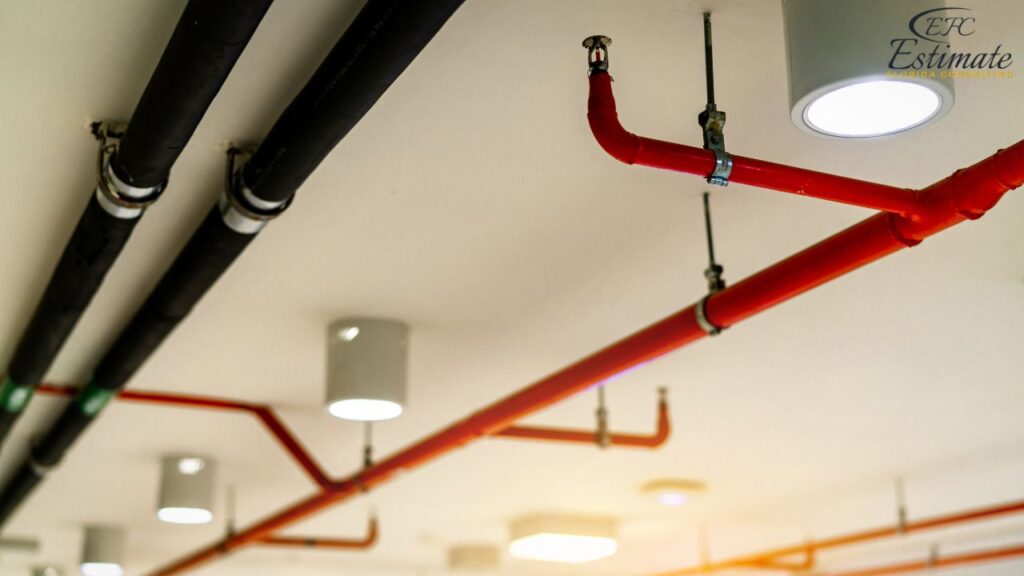
This guide provides an in-depth breakdown of the key factors influencing the cost of installing a fire sprinkler system in a commercial space, including materials, labor, floor-specific considerations, and additional factors.
Key Factors Influencing Fire Sprinkler System Installation Costs
Size and Layout of the Commercial Space
The size and layout of the commercial space are primary determinants of installation costs. Larger areas require more materials and labor, increasing the overall expense. Complex layouts, such as multiple floors, high ceilings, or irregularly shaped spaces, may require more intricate piping and installation techniques, further impacting costs. The number of floors is a significant factor, as taller buildings often require additional equipment and considerations for pressure maintenance and water delivery systems. Customizing the sprinkler layout to accommodate unique architectural features can also add to the complexity and cost of the project.
Cost Breakdown: Space Size and Floors
Floors | Space Size (Sq Ft) | Estimated Cost Range |
1-3 Floors | 5,000 | $21,420 – $34,273 |
4-6 Floors | 10,000 | $34,273 – $51,410 |
7-10 Floors | 20,000 | $51,410 – $77,115 |
11-15 Floors | 30,000 | $77,115 – $111,388 |
16-30 Floors | 50,000 | $131,820 – $197,730 |
Type of Sprinkler System
There are various types of sprinkler systems, each with different costs and applications. The choice of system depends on the specific needs of the commercial space and any regulatory requirements. For example, facilities located in cold climates may require dry pipe systems to prevent freezing, while high-risk areas may benefit from deluge systems for rapid response. Selecting the right type of sprinkler system is crucial to ensuring optimal performance and compliance with safety standards.
Cost Breakdown: Sprinkler System Type
System Type | Estimated Cost Range (per Sq Ft) |
Wet Pipe System | $2.86 – $5.72 |
Dry Pipe System | $5.72 – $10.01 |
Pre-action System | $8.57 – $12.85 |
Labor Costs
Labor costs vary based on the complexity of the installation and the experience of the contractors. Hiring skilled professionals ensures quality workmanship and compliance with fire safety standards. The installation process typically involves designing the system layout, installing pipes and sprinkler heads, and integrating the system with the building’s existing infrastructure. Selecting a contractor with a strong track record and expertise in commercial fire protection systems is crucial for a successful installation. Experienced contractors can provide valuable insights into system design and help identify cost-saving opportunities while maintaining the highest levels of safety and compliance.
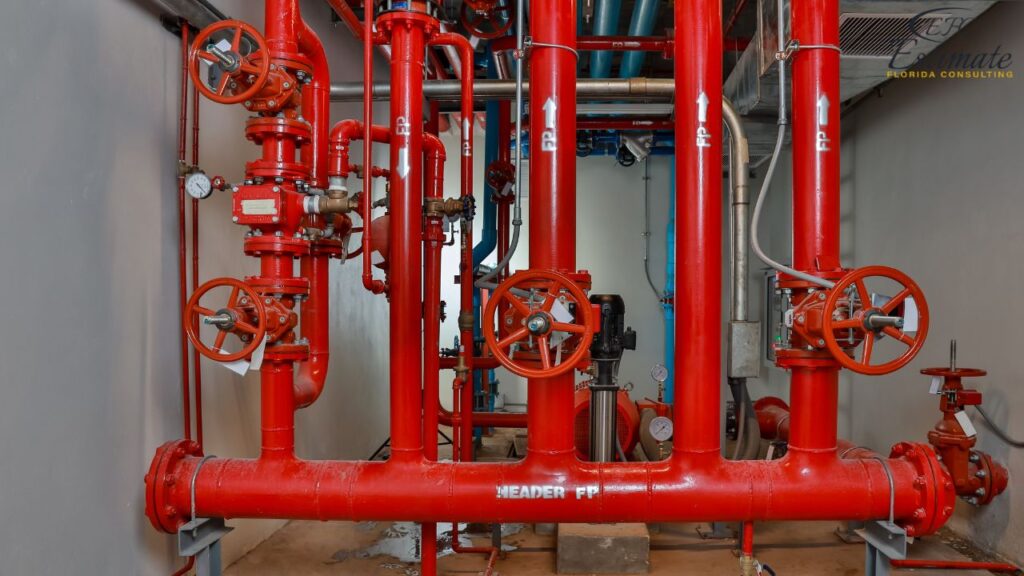
Cost Breakdown: Labor
Task | Estimated Cost Range (per Hour) |
System Design and Planning | $171 – $286 |
Installation | $171 – $343 |
Testing and Inspection | $114 – $229 |
Additional Considerations for Fire Sprinkler System Installation
Permits and Inspections
Obtaining necessary permits and ensuring compliance with local regulations are crucial steps in the installation process. These requirements add to the overall cost but are essential for safety and legality. Inspections ensure that the system meets all necessary standards and can prevent costly fines or legal issues. It’s important to work with local authorities and experienced contractors to navigate these regulatory requirements smoothly. Proper documentation and timely submissions can help streamline the approval process and avoid potential delays.
Permit Type | Estimated Cost Range |
Installation Permit | $716 – $1,429 |
Inspection Fee | $429 – $857 |
Retrofitting vs. New Construction
Retrofitting a sprinkler system into an existing building can be more complex and expensive than installing it in new construction. Retrofitting involves additional challenges such as working around existing structures, accessing concealed spaces, and minimizing disruptions to business operations. It may also require additional equipment, such as specialized fittings and pumps, to integrate with the existing infrastructure. Planning and coordination with building management and tenants are essential to minimize disruption and ensure a successful retrofit.
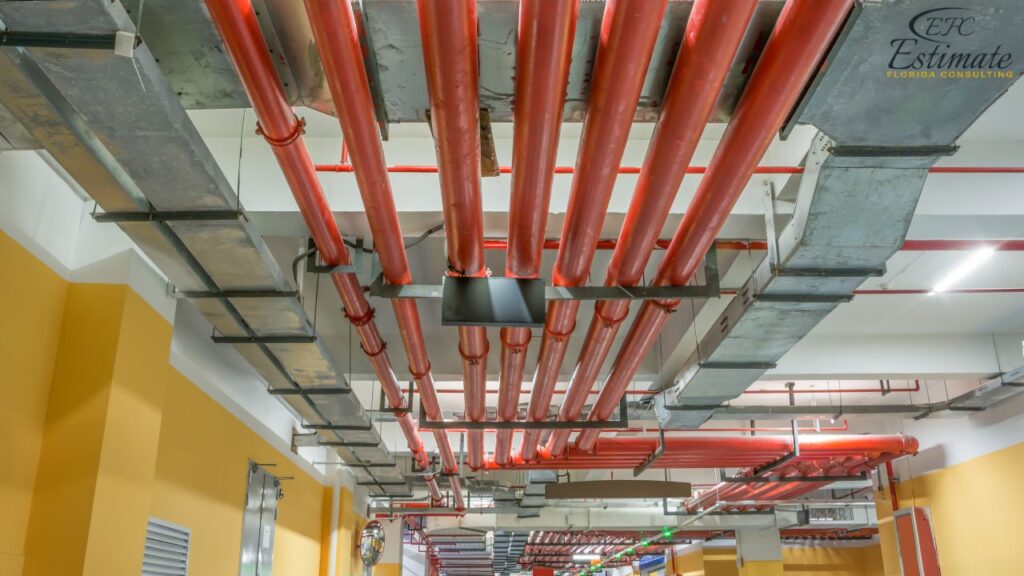
Detailed planning and phased installation can help mitigate the impact on daily operations and maintain productivity during the retrofit process.
Installation Type | Estimated Cost Increase |
Retrofitting | 20% – 30% more |
New Construction | Base Cost |
Maintenance and Future Upgrades
Regular maintenance is essential to ensure the system remains functional and compliant with safety standards. This includes periodic inspections, testing, and servicing of sprinkler heads, valves, and other components. Planning for future upgrades or expansions may also impact the initial installation cost, as certain design choices can facilitate easier integration of additional systems. A well-maintained system not only ensures safety but also extends the lifespan of the equipment and optimizes its performance. Establishing a maintenance contract with your installation contractor can provide peace of mind and ensure timely servicing and repairs.
Maintenance Task | Estimated Cost Range (per Year) |
Annual Inspection | $716 – $1,429 |
System Testing | $429 – $857 |
Floor-Specific Considerations and Costs
Low-Rise Buildings (1-3 Floors)
For low-rise buildings, installation is generally more straightforward, with fewer logistical challenges related to water pressure and vertical piping. These projects often involve simpler layouts and can be completed more quickly, reducing labor costs. Low-rise buildings typically benefit from standard wet pipe systems, which offer reliable protection with minimal complexity.
Building Type | Estimated Cost Range (5,000 Sq Ft) |
Low-Rise Office | $21,420 – $34,273 |
Retail Space | $24,271 – $38,877 |
Mid-Rise Buildings (4-6 Floors)
Mid-rise buildings present additional challenges, such as increased water pressure requirements and more complex piping systems. These projects may require more advanced planning and coordination with building infrastructure. Installing booster pumps or specialized pressure regulators can ensure consistent water flow throughout the building, enhancing system efficiency and reliability.
Building Type | Estimated Cost Range (10,000 Sq Ft) |
Mid-Rise Office | $34,273 – $51,410 |
Hotel/Residential | $37,700 – $57,850 |
High-Rise Buildings (7-10 Floors)
High-rise buildings require careful consideration of water pressure and system design to ensure effective coverage on all floors. These projects may involve additional equipment, such as booster pumps, to maintain adequate pressure. The complexity of high-rise systems often necessitates advanced design solutions, such as zone control valves and sophisticated monitoring systems, to optimize performance and safety.
Building Type | Estimated Cost Range (20,000 Sq Ft) |
High-Rise Office | $51,410 – $77,115 |
High-Rise Residential | $56,000 – $84,000 |
Tall Buildings (11-15 Floors)
For buildings with more than ten floors, additional considerations come into play, such as increased water storage and distribution needs. These projects often require detailed planning to ensure efficient water delivery to all levels and may involve more extensive piping networks and advanced control systems to manage water flow and pressure effectively.
Building Type | Estimated Cost Range (30,000 Sq Ft) |
Tall Commercial | $77,115 – $111,388 |
Mixed-Use Development | $83,500 – $120,500 |
Skyscrapers (16-30 Floors)
Skyscrapers present unique challenges due to their height and complexity. These projects require highly specialized design and engineering to ensure safety and compliance. High-capacity pumps, large storage tanks, and sophisticated control systems are typically necessary to manage water distribution effectively across multiple floors. The installation process for skyscrapers is often more time-consuming and resource-intensive, requiring meticulous planning and coordination among multiple stakeholders.
Building Type | Estimated Cost Range (50,000 Sq Ft) |
Skyscraper Office | $131,820 – $197,730 |
Luxury High-Rise | $145,000 – $217,000 |
The Role of Fire Sprinkler Systems in Commercial Spaces
Fire sprinkler systems are a critical component of fire protection strategies in commercial spaces. They serve as the first line of defense against the rapid spread of fire, providing valuable time for occupants to evacuate and reducing the extent of property damage. Beyond safety, sprinkler systems can also help businesses comply with legal requirements, minimize downtime after a fire event, and potentially lower insurance premiums. Given the variety of commercial environments—from office buildings and warehouses to retail spaces and industrial facilities—tailoring the sprinkler system to the specific fire risks and operational needs of the business is crucial.
Benefits of Installing a Fire Sprinkler System
Enhanced Safety and Protection
Fire sprinkler systems offer an immediate response to fires, helping to contain them before they can spread, thereby protecting occupants and minimizing damage. By controlling a fire early, these systems reduce the risk of injury or fatalities and provide critical time for evacuation. This proactive approach to fire safety is crucial in commercial spaces where large numbers of people may be present, and where the potential for property damage and business disruption is significant. Additionally, the presence of a sprinkler system can reassure employees and customers, knowing that effective measures are in place to protect their safety.
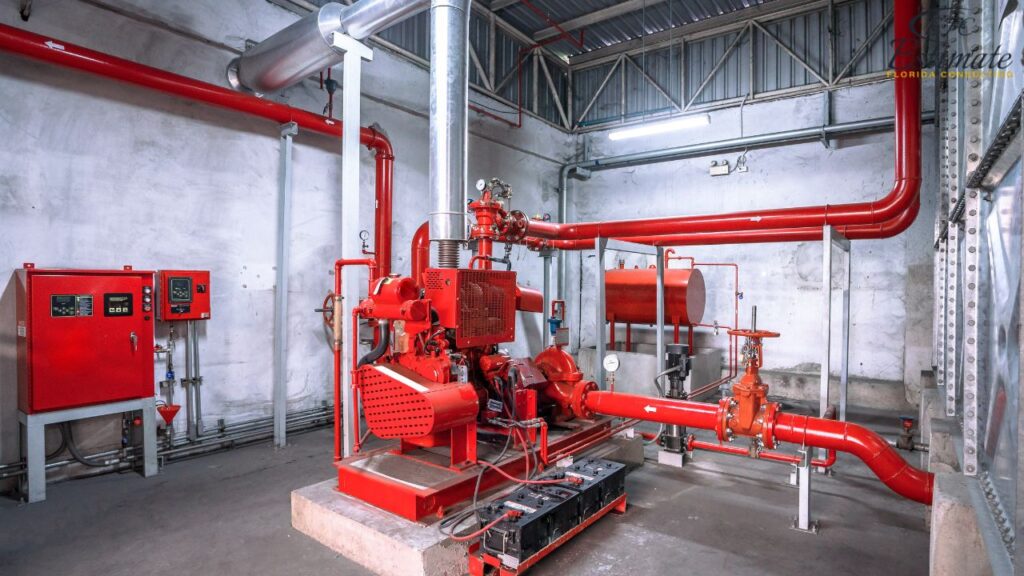
Regulatory Compliance
Most commercial buildings are required by law to have fire sprinkler systems installed to meet local fire codes and insurance requirements. Compliance with these regulations is essential to avoid fines, legal issues, and potential shutdowns. Installing a fire sprinkler system not only ensures adherence to safety standards but also demonstrates a commitment to protecting employees, customers, and assets. Staying compliant with fire safety regulations can also enhance a company’s reputation, as it reflects a dedication to upholding the highest standards of safety and responsibility.
Potential Insurance Savings
Many insurance companies offer reduced premiums for properties equipped with fire sprinkler systems due to the decreased risk of fire damage. These savings can offset some of the installation costs and provide long-term financial benefits. By reducing the likelihood of severe fire-related losses, sprinkler systems make properties more attractive to insurers and can result in more favorable terms and coverage. Over time, the cost savings from lower insurance premiums can contribute significantly to the return on investment of installing a sprinkler system.
Preservation of Property and Assets
By quickly controlling a fire, sprinkler systems help reduce the extent of property damage, minimizing repair costs and downtime. This is especially important for businesses, as prolonged closures can lead to lost revenue and customer dissatisfaction. The ability to protect valuable assets and maintain operational continuity is a key benefit of investing in a reliable fire suppression system. A well-maintained sprinkler system not only safeguards physical property but also helps preserve intangible assets such as brand reputation and customer trust.
Get Acquainted with Fire Sprinkler System
Common Mistakes to Avoid in Fire Sprinkler System Estimation and Installation
Estimating and installing a fire sprinkler system is a complex process, and several common mistakes can lead to increased costs or ineffective fire protection:
Underestimating System Complexity
One of the most common pitfalls in estimating the cost of a fire sprinkler system installation is underestimating the complexity of the building’s design. Commercial spaces come in a wide range of sizes, shapes, and configurations, and each unique aspect can significantly impact the installation process and costs. High ceilings, for example, require additional piping, specialized sprinkler heads, and potentially different pressure requirements, all of which add to the overall expense. Irregular layouts, such as buildings with alcoves, mezzanines, or complex floor plans, can complicate the routing of pipes and placement of sprinkler heads, leading to increased labor and material costs.
Ignoring Local Code Requirements
Fire sprinkler systems must comply with a range of local, state, and federal regulations, and ignoring these requirements can lead to costly rework, fines, and even project shutdowns. Each jurisdiction has specific codes and standards governing the design, installation, and maintenance of fire sprinkler systems, often based on guidelines from organizations like the National Fire Protection Association (NFPA) but with additional local amendments. For example, some areas may have stricter requirements for sprinkler head spacing, specific mandates for types of sprinkler heads in certain occupancies, or additional testing and certification procedures post-installation. Overlooking these nuances can result in a system that fails to pass inspections, necessitating expensive modifications or replacements.
Choosing the Wrong System Type
Selecting the wrong type of fire sprinkler system is another critical mistake that can lead to both inadequate fire protection and unnecessary expenses. Each type of sprinkler system—whether wet pipe, dry pipe, pre-action, deluge, or foam water—has specific applications and is designed to handle particular fire risks. For instance, wet pipe systems are suitable for environments where temperatures do not drop below freezing, as the pipes are always filled with water. In contrast, dry pipe systems are designed for unheated spaces where pipes could freeze, using pressurized air to hold water back until a fire is detected. Pre-action systems provide an added layer of protection by requiring a separate detection event before water is released, making them ideal for spaces with sensitive equipment like data centers. Choosing a system that does not match the building’s specific fire risks can result in inadequate coverage or excessive water damage, especially in environments with flammable materials or delicate assets.
Insufficient Water Supply Analysis
A critical aspect often overlooked during the fire sprinkler system estimation process is the adequacy of the building’s water supply. The effectiveness of a fire sprinkler system relies heavily on having sufficient water pressure and flow to reach all areas of the building during an emergency. If the existing water supply cannot meet these requirements, additional infrastructure, such as fire pumps, water tanks, or booster systems, may be necessary, significantly increasing the overall project costs. Insufficient water supply can also lead to inadequate fire suppression capabilities, compromising the system’s effectiveness and potentially endangering lives and property.
Choosing the Right Fire Sprinkler Contractor
Evaluating Experience and Expertise
Selecting the right contractor is crucial for a successful installation. Look for contractors with extensive experience in commercial sprinkler systems and positive customer reviews. Verify their licensing and insurance to ensure they meet industry standards. Experienced contractors can provide valuable insights and recommendations, helping you make informed decisions about system design, materials, and integration with existing infrastructure. A contractor with a proven track record can also offer guidance on the latest technologies and best practices, ensuring your system is both effective and efficient.
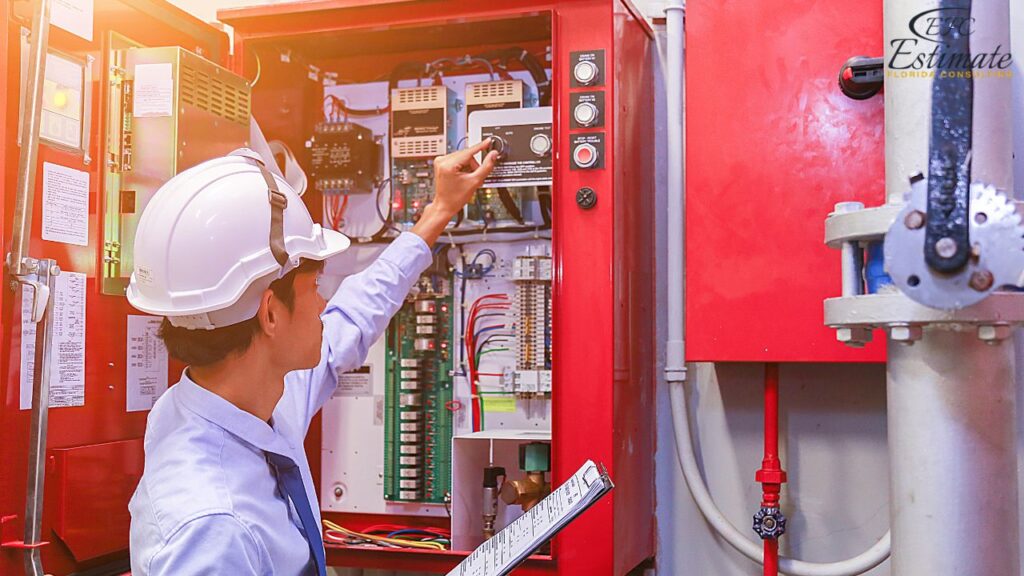
Requesting Detailed Quotes
Obtain detailed quotes from multiple contractors to compare prices and services. Ensure the quotes include all aspects of the project, from system design and installation to testing and inspection. A comprehensive quote should also outline potential contingencies and additional costs. By comparing quotes, you can assess the value and quality of services offered, ensuring you choose a contractor who aligns with your budget and expectations. It is important to thoroughly review each quote to ensure all necessary components and services are included, avoiding unexpected expenses during the project.
Challenges of Fire Sprinkler System Installation for Commercial Spaces
Installing fire sprinkler systems in commercial spaces presents a unique set of challenges that require careful planning, expert execution, and adherence to strict safety and building regulations. Here are some of the key challenges involved in fire sprinkler system installation for commercial spaces:
Complex Building Layouts and High Ceilings
Obtain detailed quotes from multiple contractors to compare prices and services. Ensure the quotes include all aspects of the project, from system design and installation to testing and inspection. A comprehensive quote should also outline potential contingencies and additional costs. By comparing quotes, you can assess the value and quality of services offered, ensuring you choose a contractor who aligns with your budget and expectations. It is important to thoroughly review each quote to ensure all necessary components and services are included, avoiding unexpected expenses during the project.
Compliance with Local Codes and Regulations
Fire sprinkler systems must comply with a wide range of local, state, and national building codes and fire safety regulations, which dictate standards for system design, installation, and maintenance. These regulations can vary significantly between jurisdictions, and failure to comply can result in costly redesigns, penalties, or delays. Navigating these regulatory requirements requires expertise and can be time-consuming, especially if the building is located in an area with stringent fire safety codes. Ensuring that the system meets all applicable standards often requires coordination with fire marshals, inspectors, and other authorities.
Integration with Existing Building Systems
In existing commercial buildings, retrofitting fire sprinkler systems can be particularly challenging due to the need to integrate with current structures and other building systems, such as HVAC, electrical, and plumbing. This process can involve significant disruption, including opening walls or ceilings, rerouting existing services, and ensuring that all systems function harmoniously without compromising fire safety. Coordination among different trades is crucial, and any misalignment or oversight can lead to delays and increased costs. Additionally, maintaining normal business operations during installation can be difficult, requiring work to be done during off-hours or in phases.
Download Template For Fire Sprinkler Project Breakdown
- Materials list updated to the zip code
- Fast delivery
- Data base of general contractors and sub-contractors
- Local estimators
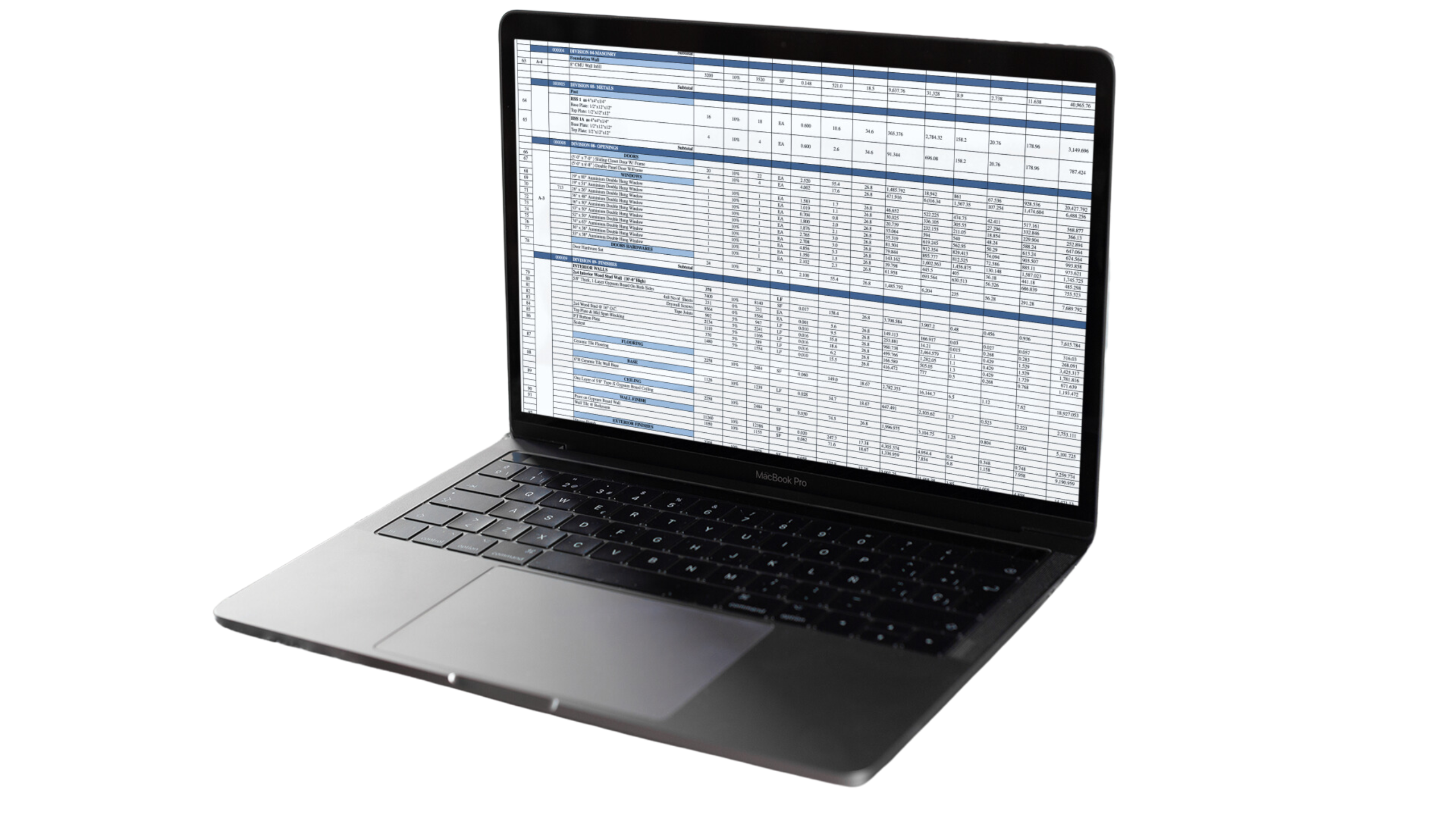
Water Supply and Pressure Issues
A reliable and adequate water supply is critical for the proper operation of fire sprinkler systems. In some commercial buildings, especially high-rises or those located far from municipal water sources, the existing water pressure may be insufficient to meet the needs of the sprinkler system. Addressing these issues often requires the installation of fire pumps, water storage tanks, or pressure-boosting systems, which can add significant complexity and cost to the project. Ensuring that the water supply meets the system’s hydraulic requirements is essential, and miscalculations can result in inadequate fire protection.
Cost Management and Budget Constraints
The installation of fire sprinkler systems in commercial spaces can be expensive, with costs influenced by the size of the building, the complexity of the layout, and the type of system required. Managing these costs while ensuring compliance and effectiveness can be a significant challenge, particularly in projects with tight budgets. Additional factors, such as the need for specialized equipment, labor costs, and unforeseen complications during installation, can further strain financial resources. Effective cost management requires thorough initial planning, accurate estimates, and close monitoring of the installation process to avoid overruns.
Additional Tips for a Successful Fire Sprinkler Installation
Consider Long-Term Maintenance Needs
Investing in high-quality materials and a robust design can reduce long-term maintenance costs. Regular maintenance and inspections are crucial to ensure the system remains operational and compliant with safety standards. Establishing a maintenance contract with your installation contractor can provide peace of mind and ensure timely servicing. Routine maintenance not only enhances system reliability but also helps identify and address potential issues before they escalate, reducing the risk of costly repairs or system failures.
Budget for Unexpected Challenges
Unexpected challenges, such as hidden structural issues or modifications to the building, can increase costs. It’s wise to budget an extra 10-15% to cover unforeseen expenses. By preparing for potential surprises, you can avoid project delays and ensure that any issues are addressed promptly and efficiently.
Open communication with your contractor and proactive planning can help mitigate the impact of unexpected challenges and keep your project on schedule.

Explore Eco-Friendly and Efficient Solutions
Consider using eco-friendly materials and technologies to reduce environmental impact and improve sustainability. Systems that integrate with water-saving technologies or utilize advanced detection methods can enhance efficiency and reduce operational costs. Exploring options that align with your sustainability goals can provide long-term benefits for both your property and the environment. Implementing environmentally friendly solutions can also enhance your property’s appeal to tenants and customers who prioritize sustainability.
Understanding Fire Sprinkler Systems
What is a Fire Sprinkler System?
A fire sprinkler system is an active fire protection measure that automatically disperses water to suppress or extinguish fires. It consists of a network of pipes filled with water (or air, in the case of dry systems) and sprinkler heads that activate in response to heat. When the heat from a fire reaches a certain temperature, the sprinkler heads activate, releasing water directly onto the fire. Sprinkler systems are essential for safeguarding lives and property, reducing fire damage, and ensuring compliance with fire safety codes. They are designed to respond quickly to fire outbreaks, providing crucial time for occupants to evacuate and reducing the spread of fire and smoke throughout the building. By addressing a fire at its early stages, sprinkler systems can significantly minimize the potential for catastrophic damage and ensure that a property remains safe and operational.
Types of Fire Sprinkler Systems
- Wet Pipe Systems: The most common type, where pipes are constantly filled with water. These systems are simple and reliable, activating quickly in response to a fire. Wet pipe systems are often favored for their straightforward design and ease of maintenance, making them a popular choice for many commercial properties.
- Dry Pipe Systems: Used in areas where pipes are prone to freezing. The pipes are filled with pressurized air, which is released when a sprinkler head is activated, allowing water to flow. Dry pipe systems are ideal for unheated buildings or spaces that experience cold weather, as they prevent pipes from freezing and bursting.
- Pre-action Systems: A hybrid of wet and dry systems, requiring a two-step activation process. These are ideal for environments where accidental discharge could cause significant damage, such as data centers. Pre-action systems provide an added layer of protection by using a separate detection system to confirm the presence of fire before water is released.
- Deluge Systems: Used in high-hazard areas, these systems release a large volume of water through open sprinkler heads to control fires rapidly. Deluge systems are typically installed in facilities handling flammable materials, where rapid and extensive coverage is necessary to prevent a fire from spreading quickly.
Get 5 New Leads Next 7 Days With Our System
- Multi-Family House
- Single-Faimly House
- Modern House
- Duplex
- Ranch House
- Bungalow
Conclusion
Installing a fire sprinkler system in a commercial space involves various factors that influence the overall cost, including materials, labor, floor-specific considerations, and additional factors. By understanding these components and working with experienced professionals, property owners can ensure a successful project that enhances safety, compliance, and functionality. Careful planning and budgeting will help prevent unexpected costs and ensure a reliable, effective fire protection system that meets current and future demands. Whether you’re installing a system in new construction or retrofitting an existing building, investing in a comprehensive fire sprinkler system is a wise choice that can protect your property and occupants for years to come.
FAQs
Installing a fire sprinkler system in a commercial space is crucial for ensuring the safety of occupants and compliance with local fire safety regulations. These systems provide reliable protection by automatically detecting and controlling fires, minimizing damage, and potentially saving lives. They serve as the first line of defense in fire safety, offering peace of mind and significantly reducing the risk of fire-related incidents.
The key factors influencing the cost include the size and layout of the commercial space, the type of sprinkler system chosen, labor costs, permits and inspections, whether the installation is a retrofit or new construction, and ongoing maintenance needs. Each of these elements contributes to the overall expense of the project.
Larger areas require more materials and labor, increasing the overall expense. Complex layouts, such as multiple floors, high ceilings, or irregularly shaped spaces, may require more intricate piping and installation techniques. Customizing the sprinkler layout to accommodate unique architectural features can also add to the complexity and cost of the project.
- Here’s a breakdown of estimated costs based on space size and floors:
Floors | Space Size (Sq Ft) | Estimated Cost Range |
1-3 | 5,000 | $21,420 – $34,273 |
4-6 | 10,000 | $34,273 – $51,410 |
7-10 | 20,000 | $51,410 – $77,115 |
11-15 | 30,000 | $77,115 – $111,388 |
16-30 | 50,000 | $131,820 – $197,730 |
- Various types of sprinkler systems are available, each with different costs and applications:
System Type | Estimated Cost Range (per Sq Ft) |
Wet Pipe System | $2.86 – $5.72 |
Dry Pipe System | $5.72 – $10.01 |
Pre-action System | $8.57 – $12.85 |
- Labor costs vary based on the complexity of the installation and the experience of the contractors. Hiring skilled professionals ensures quality workmanship and compliance with fire safety standards. The installation process typically involves designing the system layout, installing pipes and sprinkler heads, and integrating the system with the building’s existing infrastructure.
Task | Estimated Cost Range (per Hour) |
System Design and Planning | $171 – $286 |
Installation | $171 – $343 |
Testing and Inspection | $114 – $229 |
Fire sprinkler systems enhance safety and protection, ensure regulatory compliance, potentially lower insurance premiums, and preserve property and assets by quickly controlling fires, reducing damage, and minimizing business downtime.
Evaluate contractors based on their experience, expertise, licensing, and customer reviews. Obtain detailed quotes from multiple contractors to compare prices and services. Ensure the quotes include all aspects of the project, from system design and installation to testing and inspection.
Google Reviews

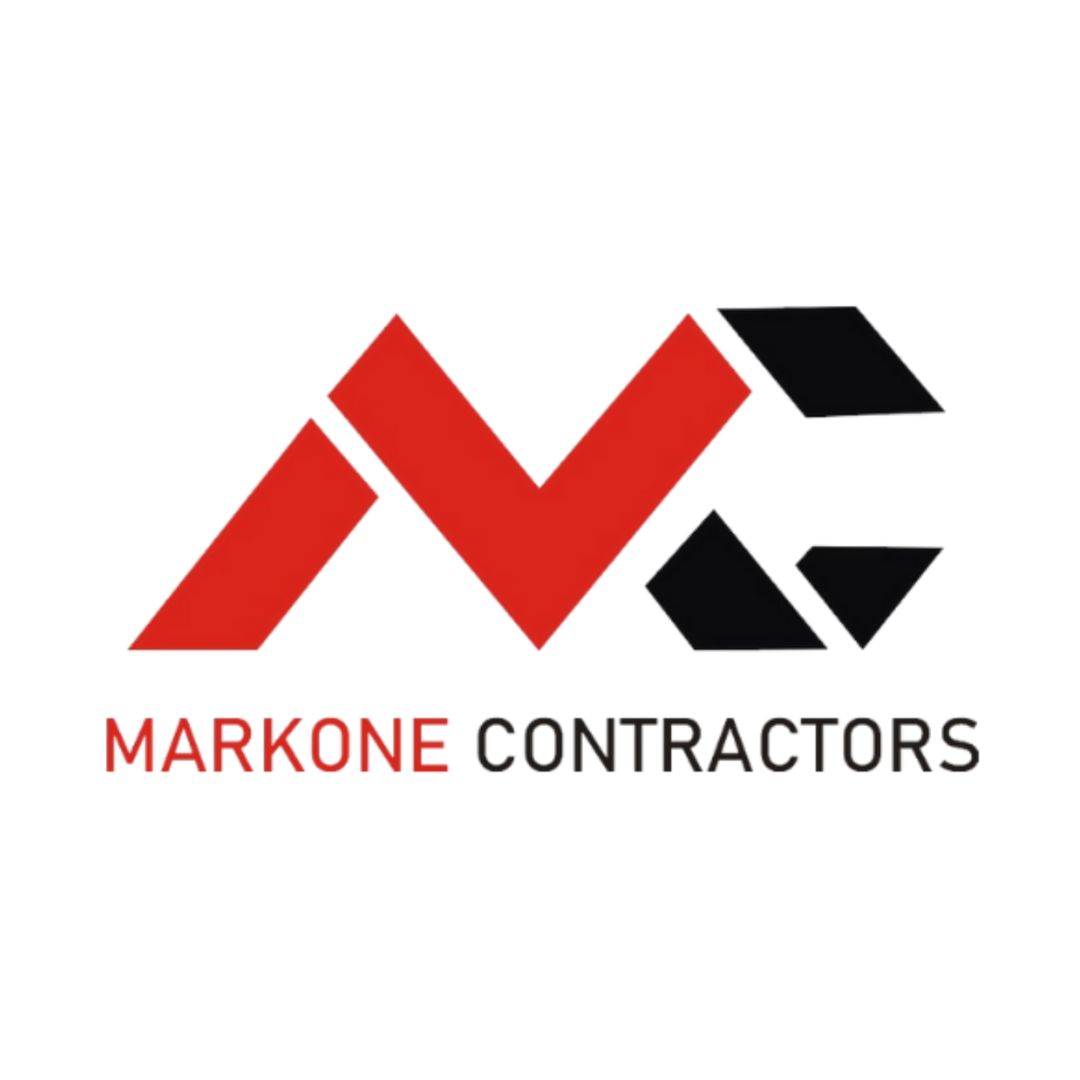
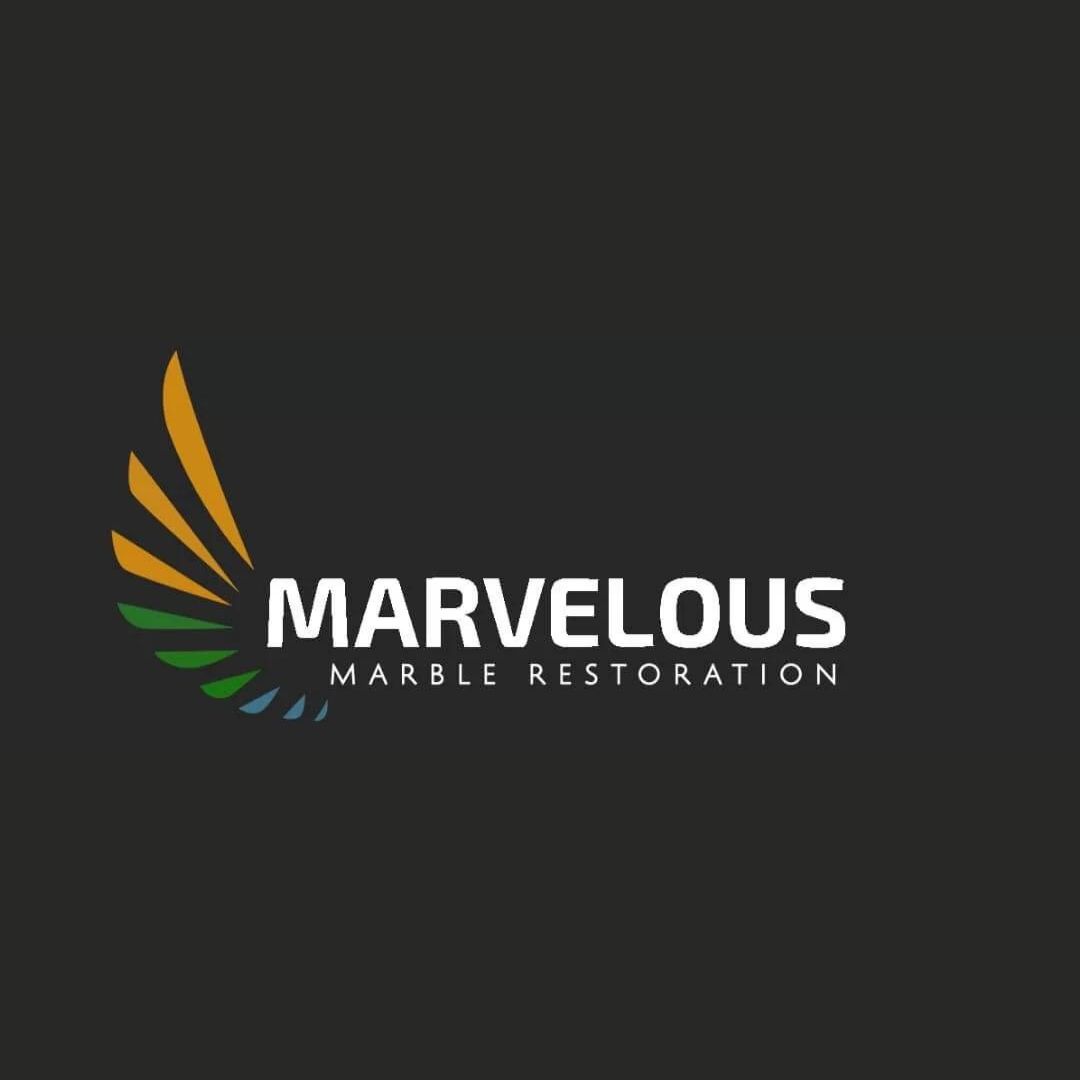
Process To Get Fire Sprinkler System Cost Estimate Report
Here I am going to share some steps to get fire sprinkler system cost estimate report.
-
You need to send your plan to us.
You can send us your plan on info@estimatorflorida.com
-
You receive a quote for your project.
Before starting your project, we send you a quote for your service. That quote will have detailed information about your project. Here you will get information about the size, difficulty, complexity and bid date when determining pricing.
-
Get Estimate Report
Our team will takeoff and estimate your project. When we deliver you’ll receive a PDF and an Excel file of your estimate. We can also offer construction lead generation services for the jobs you’d like to pursue further.

